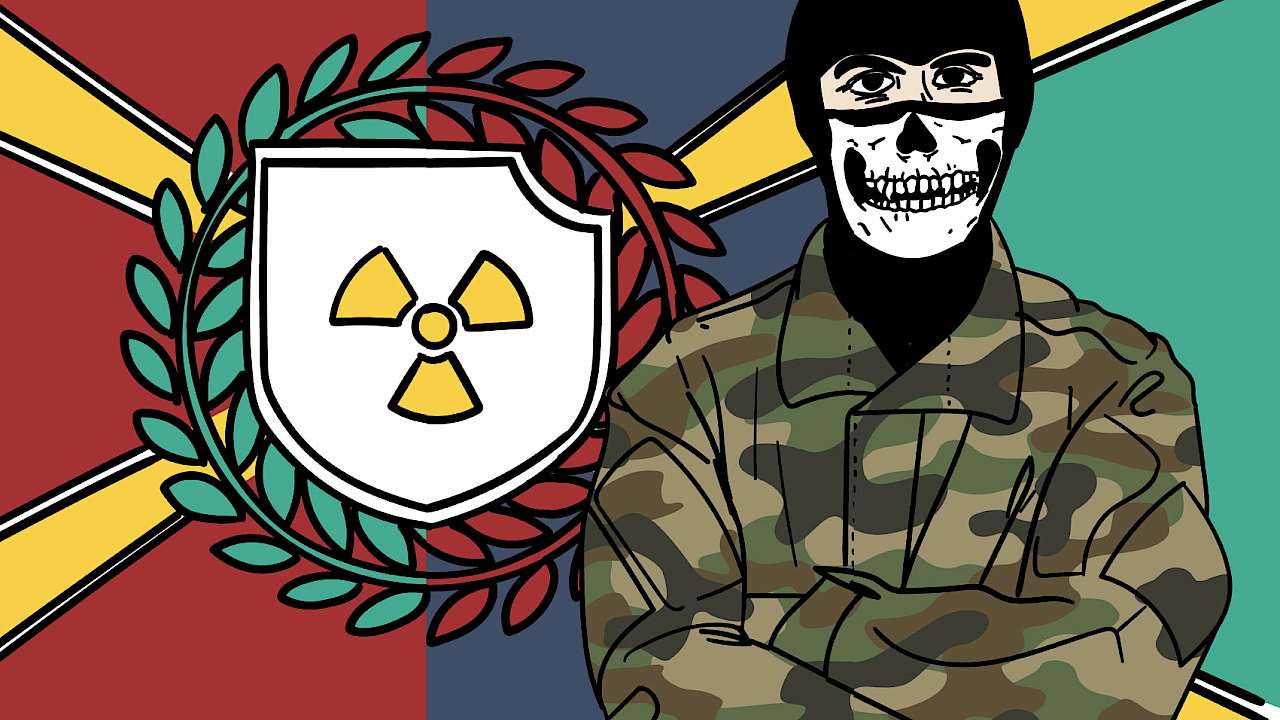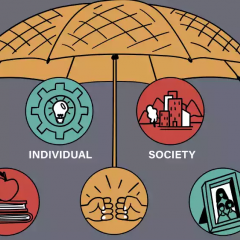Download the reports from the three part series below:
Some parts of the extreme-right seem to verge on parody, going out of their way to be as offensive to as many people as possible and violating almost every taboo they can (https://www.bbc.co.uk/news/uk-england-leeds-56044179). In terrorism research participation in extremism is often seen as a precursor to violence and there has been no shortage of terrorists motivated by extreme-right beliefs in recent years. But looking closely at extremist spaces allows us to understand that beneath the rhetoric and posturing is a subculture that rewards its participants by giving them something they want such as self-esteem, community, a chance to be creative, or simply to be good at what they do (https://www.goodlivesmodel.com/information.shtml#General). For those embedded in extremist subcultures they find rewarding, violent direct action such as terrorism even in service of ideological goals, may be less likely. The most likely outcome of right-wing terrorism is either incarceration or death, both of which block access to the goods provided by the subculture. However, where internal or external interventions, most notably law-enforcement action, disrupts access to a subculture, perceptions of risks and rewards around terrorism may change, potentially making terrorism more likely.
This article provides an overview of a series of three CREST reports under the heading LARPocalypse. These reports explore the idea of the extreme-right – specifically the manifestation referred to as Siege Culture - as a subculture that has value to participants and allows them to play different roles. The analysis suggests that the more embedded someone is in a subculture the lower the motivation to engage in terrorist violence. Conversely, where access to subcultural roles is threatened or destabilised, perhaps because of an internal dispute or external enforcement actions, the risks of terrorism may increase.
…risk of serious ideological violence is likely to increase where subcultures and roles are disrupted or destabilised.
Siege (Sub)Culture
The starting point for this analysis is the idea of a subculture, loosely defined as groups of people opposed in some way to the current ‘mainstream’ culture and aligned along ‘deviant’ values. Many of us may have been part of a subculture growing up and contemporary trends such as Kpop, tattoo collecting, and videogame fandom can be analysed as subcultures.
Siege culture is an ideological and cultural tendency in the extreme-right organised loosely around the forum Iron March, and the text Siege (https://www.crestresearch.ac.uk/comment/what-is-siege-culture/). Siege Culture underpinned several extreme-right groups in the later 2010’s and early 2020’s, many of which have since been banned in the UK (e.g., Sonnenkrieg Division). Ideologically Siege Culture was an ultra-extreme version of fascism that both normalised racism, homophobia, and anti-government beliefs, and celebrated extreme-right terrorists. Despite its rhetoric Siege Culture has several characteristics of a subculture, most notably its enforcement of deviant norms, emphasis on youth, and commitment to style.
There has been limited interest in subcultures from terrorism studies, often using the idea to try and explain radicalisation. However, another current of research makes the case that the stylistic aspects of subculture and their meaning for participants should not be dismissed in terrorism research (https://www.crestresearch.ac.uk/resources/lethal-subcultures/). Just like other subcultures Siege Culture has meaning for participants, providing them with opportunities to rebel against mainstream norms, express dissatisfaction, and associate with others that share their views. Most notably there has been a strong contrast between the rhetoric of Siege Culture and its celebration of right-wing terrorism, and the relatively few acts of terrorist violence that have been associated with the subculture (https://extremism.gwu.edu/sites/g/files/zaxdzs5746/files/Jackson%20-%20Transnational%20neo%20Nazism%20in%20the%20USA,%20United%20Kingdom%20and%20Australia.pdf). This further suggests that Siege Culture is not simply a terror factory but holds wider meaning for those who participate in it.
Roleplaying Games
Data on Siege Culture is messy, both because it is distributed across a wide array of platforms and formats (like many subcultures) and because the subculture is partially clandestine. Despite this, a close reading of the available material suggests that participation in Siege Culture is not uniform. Individual actors can do many different things at different times. Based on previous work in this space the LARPocalypse suggested a three-part framework for understanding an individual’s role within an extreme-subculture:
- Behaviours, based on what an individual does.
- Status, reflecting how others in the subculture see that individual.
- Trajectory, emphasising how an individual’s role may shift over time e.g., by engaging in new behaviours or experiencing a change in status.
Roles were not mutually exclusive and trajectories were difficult to track, but several different roles and sub-roles emerged from the analysis group under the headings of idealogue, organiser, technician and offender. Roles, particularly higher status ones, were seen as being rewarding for participants. Allowing them to feel good about themselves and their place within the subculture. Roles may not mean much to those outside the subculture, but within their own specific niche it was possible for individuals to accumulate significant status and recognition from others.
Crucially, the rewards of being a violent direct actor were inherently limited. Individuals could only take on the role for a short amount of time: the length of time between an attack and external intervention (often only minutes). Likewise, any status associated with being a direct actor was limited as access to the wider subculture would inevitably be curtailed due to incarceration or death (although there were a small number of recognised “prisoners of war” who remained partially connected to the subculture https://www.rollingstone.com/politics/politics-news/how-did-a-convicted-neo-nazi-release-propaganda-from-prison-628437/). This reasoning seems to chime with the wider observation that despite the sizable numbers of people seemingly engaging with Siege Culture, very few have engaged in serious ideologically motivated violence (https://www.crestresearch.ac.uk/comment/what-is-siege-culture/).
The analysis suggests that the non-violence of Siege Culture can be attributed at least in part to a sense of subcultural constraint. At least for those well-embedded in the subculture and attached to the rewards provided by participation there is little to be gained by ‘cashing in’ their current role for one of the short-lived notoriety of being a celebrated terrorist. In wider terrorism studies space, this idea sits beneath the concept of brakes on violent action (https://www.crestresearch.ac.uk/resources/internal-brakes-british-jihadi/). Violence is constrained not by top-down instructions, strategic imperatives, or ideological guidance, but because from the individual’s perspective the status quo is usually preferable. In the end, preparing for race war is likely more fun for many than fighting it.
Managing Extreme Subcultures
For those tasked with managing the risks associated with extreme subcultures, there are several relevant observations from this analysis:
First, granular detail on a subculture is important. This means understanding not only the broad ideological perspective of an individual, but also the kinds of spaces they are active in, what they do, how they feel about it, and how others feel about them.
Second, subcultural constraint only applies to planned acts of serious ideological violence i.e., terrorism. Plots which can be prepared and not carried out, and spontaneous violence driven by emotion over rational calculation, are still perfectly possible and both have been features of Siege Culture.
Third, and most importantly, risk of serious ideological violence is likely to increase where subcultures and roles are disrupted or destabilised. The most obvious example of this has been through law enforcement interventions including arrests and proscriptions. Where these shut down roles that individuals find meaningful and are important to well-being, however anti-social they may be, there is a risk that individuals may attempt to move into more violent roles. This risk is particularly acute where individual’s feel that they have no other options open to them. This does not mean that extreme subcultures should go unpoliced, only that consideration needs to be given to the unintended consequences of disruptions.
Fourthly, internal dynamics of subcultures can be as destabilising as intervention by law enforcement. Loss of face, internal dispute, power struggles, sexual jealousy, all can play a part in potentially destabilise otherwise stable roles. This heightens the need for good subcultural knowledge in policing the risks associated with extremist subcultures.
Copyright Information
As part of CREST’s commitment to open access research, this text is available under a Creative Commons BY-NC-SA 4.0 licence. Please refer to our Copyright page for full details.
IMAGE CREDITS: Copyright ©2024 R. Stevens / CREST (CC BY-SA 4.0)






